There are many figures among Iranian politicians who used to wear clerical garb. However, they took off clerical clothes and wore suit pending their positions. Gholamhossein Karbaschi, the former Tehran Mayor and the current secretary-general of Executives of Construction Party, is one of the most famous officials in this context.
Following the 1979 Revolution in Iran, Khomeini identified Karbaschi as Hujjat al-Islam [a mid-level religious title], appointing him as his representative in the Gendarmerie Office. Thereafter, Karbaschi never wore clerical clothes.
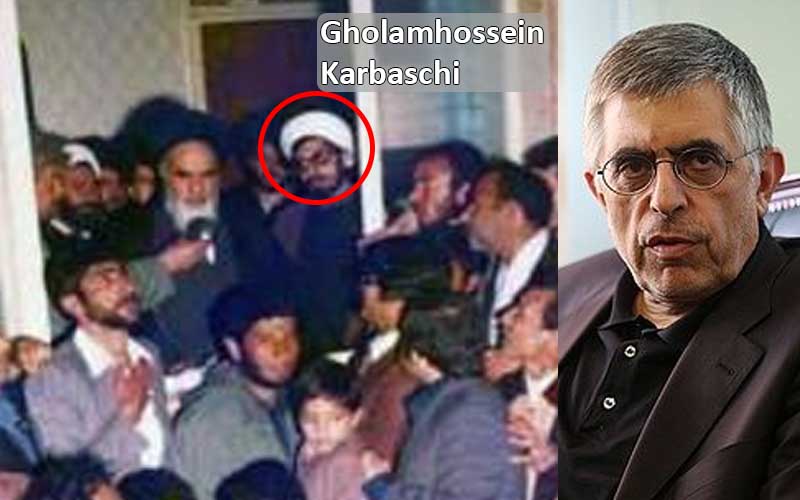
There is a slate of such figures who left clerical clothes forever, including Hesamodin Ashna, the former Deputy Minister of Intelligence and Security and the former President’s advisor for security affairs; Mohammad-Ali Hadi Najafabadi, the former MP and the former Deputy Foreign Minister and ambassador; Mohammad-Ali Ansari, one of officials of the Islamic Republic founder Ruhollah Khomeini’s bureau; Mahmoud Sadeghi, the former ‘reformist’ MP; Ali Jannati, the former Minister of Culture and Islamic Guidance and a former diplomat; and Seyyed Abbas Salehi, the Minister of Culture and Islamic Guidance.
There are several officials who did not wear clerical clothes in the early years. Judiciary Chief Ebrahim Raisi, Judiciary Spokesperson Gholamhossein Mohseni Ejei, and former Justice Minister Mostafa Pourmohammadi were among the latter sort.
These three individuals played crucial roles in systematic suppression and murderous policies of the Islamic Republic within the past four decades. They were not wearing clerical clothes in the early 1980s when the government had dominated a vicious crackdown on society.
Today, these men claim that they are Mojtahed [a high-ranking religious title who can issue fatwa] while they were not wearing clerical clothes in the 1980s. At the time, their only ‘divine’ task was carrying out arbitrary arrests and extrajudicial executions of dissidents.
These “jurists” were founders of the Islamic Republic’s notorious and harrowing judiciary, who cold-bloodedly sent thousands of young girls and boys to the gallows. Nonetheless, they did never make clear when they passed clerical courses in Islamic seminaries while they had held several security and intelligence occupations at the same time and were accompanying with several well-armed bodyguards.
The fourth figure is Mohammad Moghissei, known as Nasserian in the notorious prison of Evin. In the early 1980s, he was an interrogator and torturer in Ward 3. Later, he became the prosecutor of the prisons of Qezelhessar and Gohardasht in Karaj, Alborz province, then returned to Tehran and became Evin’s prosecutor. Until the mid-1990s, he never wore clerical clothes.
The fifth man is Ahmad Marvi, who was working at the Prosecutor’s office of the Revolutionary Court until the mid-1980s. Anyhow, there were several clerics like Mohsen Doagu who were constantly changing their clothing in accordance with their political or judicial occupation.
Seyyed Ebrahim Raisi, the Leading Member of 1988 Death Commissions
In 1980, Raisi began his job as an interrogator in the Karaj Prosecutor’s Office. At the time, he avoided wearing clerical clothes. One year later, he was upgraded to the Attorney General of Karaj amidst the darkest days of Iran’s history when the government was arbitrarily seizing youths on the streets, sending ordinary people to the war fronts against Iraq and dissidents to dungeons and gallows.
Given his ruthless performance, he was simultaneously appointed as Hamedan’s Prosecutor. The following photo is related to 1983, when Raisi met with a group of Hamedani soldiers on the warfront.
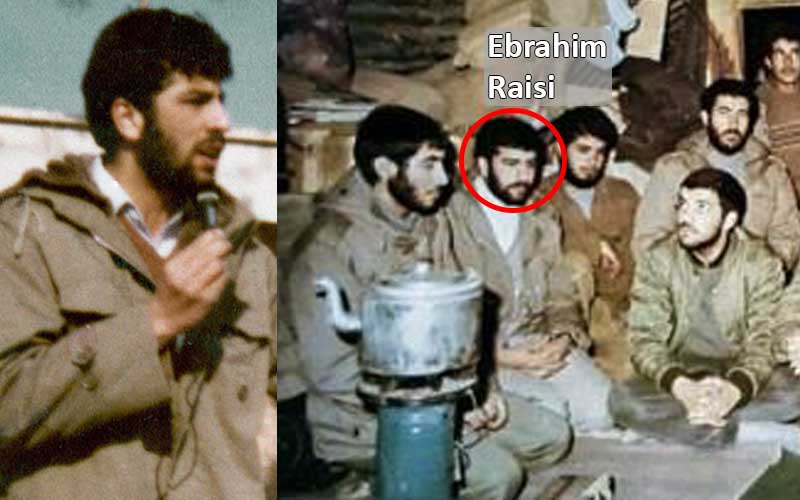
In 1985, Raisi was transferred to Tehran becoming the deputy of then-Tehran Prosecutor Ali Razini for dissident organizations. Despite the replacement of Razini with Morteza Eshraghi, who also played a crucial role in 1988 extrajudicial executions, Raisi remained in his post.
Following the death of Khomeini and in tandem with appointing Mohammad Yazdi as the chief of Judiciary, Raisi was upgraded as the general prosecutor of the Revolutionary Court. At the time, Yazdi appointed Assadollah Lajevardi, the notorious warden of Evin Prison, as the chief of Iran’s Prisons Organization.
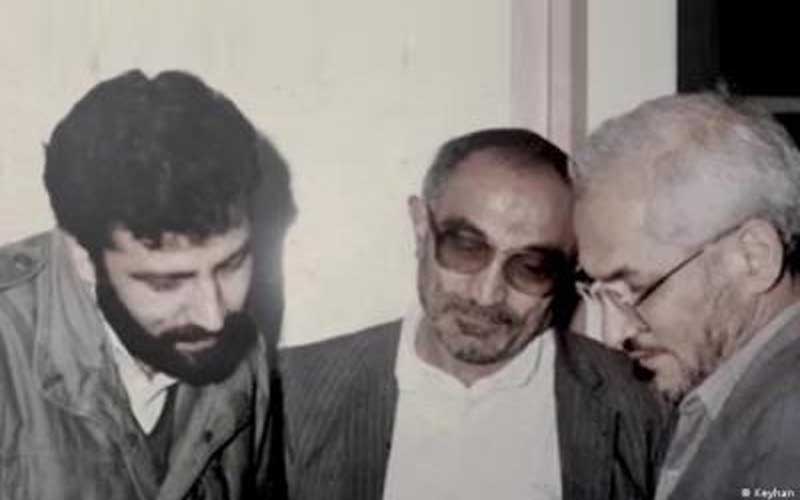
Khomeini’s aides later said that during the massacre of political prisoners in 1988, Lajevardi was personally reporting the number of executions to Khomeini each morning. Raisi always had a good relationship with Lajevardi.
Nevertheless, Raisi never wore clerical clothes amidst the 1988 massacre. Nowadays, Raisi teaches jurisprudent lessons of Kharej [outside] and prepares himself to become the next Supreme Leader. Notably, Khamenei was already teaching the same lessons.

Meanwhile, in March 2016, Khamenei appointed Raisi as the custodian of the Astan Quds Razavi, the largest endowment organization in the Islamic world. For three years, Raisi directed one of the greatest conglomerates across the world.
There is no report or definite estimation about the conglomerate’s wealth and benefits. However, its is responsible for funding extremist groups in Yemen, Iraq, Lebanon, and Palestine. Moreover, Iranian authorities find and hire spies like former special agent with the U.S. Air Force Office of Special Investigations Monica Witt through this foundation and its “regular conferences.”
Gholamhossein Mohseni Ejei, Notorious Torturer
Ejei is one of the most notorious interrogators and torturers in the Islamic Republic while his background terrifies many current officials. He is currently the first deputy of Judiciary and a member of the Expediency Council.
He also was the prosecutor of the Special Court for Clerics, the Minister of Intelligence and Security (MOIS), and the Attorney-General. Ejei began his career as an interrogator and torturer in Evin’s Ward 7. Following an interrogation ran by Ejei, Taghi Mohammadi one of alleged officials of bombing the Prime-Ministry Office committed suicide due to Ejei’s pressure.
Ejei was personally interrogated Seyyed Mehdi Hashemi, the brother of Hossein-Ali Montazeri’s son-in-law, coercing him to make televised confessions while he was merely 30. At the time, Montazeri was Khomeini’s designated successor.

For a while, Ejei was the Prosecutor’s representative in the MOIS. However, he avoided wearing clerical clothes at the time. In the 1990s, he suddenly portrayed himself as a cleric and was upgraded from interrogator to judge.
He is, in fact, the flipside of Raisi and had not committed lower crimes in comparison to the Judiciary Chief. Observers believe that Ejei is a potential successor for the Judiciary if Raisi becomes president.
Mostafa Pour-Mohammadi, Another Member of the Death Commissions
Since 1979 to 1984, Pour-Mohammadi was prosecutor of the Revolutionary Court in Bandar Abbas, Kermanshah, and Mashhad. In 1984, he along with Razini were transferred from Mashhad to the Capital Tehran. They secretly investigated the corruption case of the then-Attorney-General Seyyed Hossein Mousavi Tabrizi and reported the outcome to Khomeini through Khamenei.
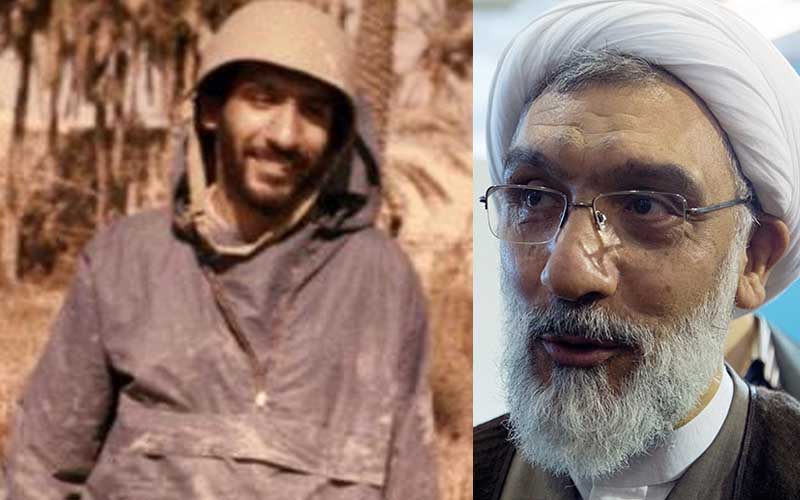
Afterward, he was involved in the Iran-Iraq war for a short while. Then, he was transferred to the MOIS. During the massacre of political prisoners in 1988, Pour-Mohammadi was the MOIS representative in the Death Commission.
He is also proud of his role in executing dissidents, particularly members and supporters of the Mojahedin-e Khalq (MEK/PMOI), in 1988. “I defended [Khomeini’s] move. We had a mission in regard to the MEK, back when I was the Revolutionary Court prosecutor. I issued many indictments against the MEK and sent it to the court. Many of them were condemned, many were executed and many other verdicts,” he said in an interview with Mosallas magazine in July 2019.
Former #Iran Justice Minister, Mostafa Pour-Mohammadi blatantly defended the #1988Massacre of political 30.000 prisoners.
at the time of mass executions he was Representative of Intelligence Ministry in the “Death Commission” pic.twitter.com/L3IVM33VUE— IRAN HRM (@IranHrm) July 27, 2019
Pour-Mohammadi also held different positions in “reformists’ cabinets.” He was the Interior Minister from 2005 to 2008, during President Mohammad Khatami’s era. He also became the Justice Minister from 2013 to 2017 under President Hassan Rouhani.
Throughout the 1980s, he avoided using clerical robes. Today, he is the secretary-general of Combatant Clergy Association, which is considered one of the most important clerical bodies.
Mohammad Moghissei, Executioner of Political Prisoners
For 38 years, Mohammad Moghissei served the oppressive apparatuses through different posts. He was also known as Haj Nasser or Nasserian among former political inmates in the prisons of Qezalhessar, Gohardasht, and Evin. Moghissei is currently the head of the 28th Branch of Tehran’s Public and Revolutionary Court.

Survivors of the 1988 massacre narrated harrowing stories about Moghissei’s role in executions at Evin Prison. “No MEK inmates should survive,” eyewitnesses remember that Moghissei had said once.
“Moghissei personally held prisoners’ legs” to kill them faster, according to another survivor.
“He executed political prisoner Nasser Mansouri, who suffered from spinal cord injury. Two days later, in another crime, he barbarically hanged actor Mohsen Mohammad Bagher, who was congenitally paralyzed in both legs. Mohsen Mohammad Bagher has played a famous role as a child in the movie ‘The Stranger and the Fog,’” said another eyewitness.
Moghissei also has sentenced and sentences ethnic and religious minority followers to long-term imprisonment and even the death penalty. In April 2011 and December 2019, the European Union and the State Department, respectively, sanctioned him for unfair punishments of social, political activists, and journalists.
Following the bloody crackdown on fed-up people in November 2019 and regarding his merciless rulings, the Judiciary Chief promoted Moghissei as one of the Supreme Court members in November 2020.
Ahmad Marvi, Raisi’s Successor in the Astan Quds Razavi
Just like Raisi, Ahmad Marvi was born in Mashhad in 1958. In 1980, Marvi and Raisi joined Hadi Marvi, Khomeini’s representative in Masjed Suleyman, Khuzestan province, to counter political dissidents.
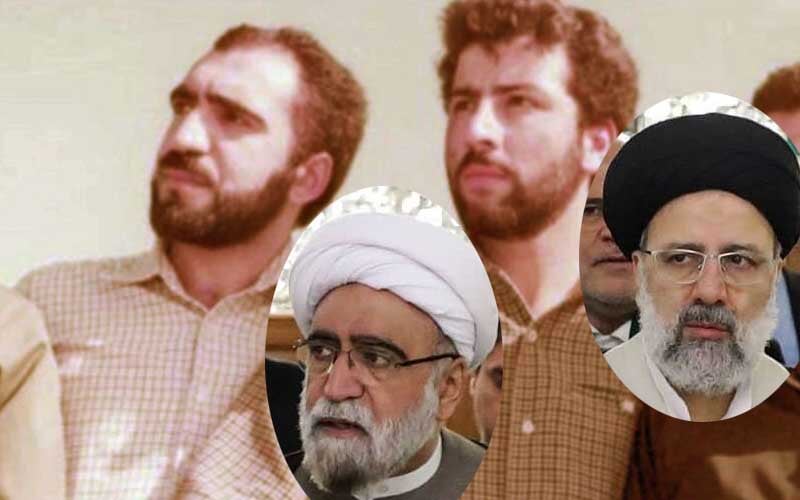
After his return, Marvi was appointed as the chief of staff to Tehran Prosecutor Ali Ghodosi. In 1981, Ghodosi was killed. However, Marvi remained as the political deputy of the Attorney-General until 1985. He constantly avoided wearing clerical robes during his ‘judicial’ occupations.
Since 1989 to 2019, Marvi has acted as the unofficial accountant of Khamenei in the Supreme Leader Office. In April 2019, Khamenei appointed Marvi as the head of Astan Quds Razavi following the appointment of Raisi as the Judiciary Chief. He is known as one of Khamenei’s trustees and inner-circle officials.





